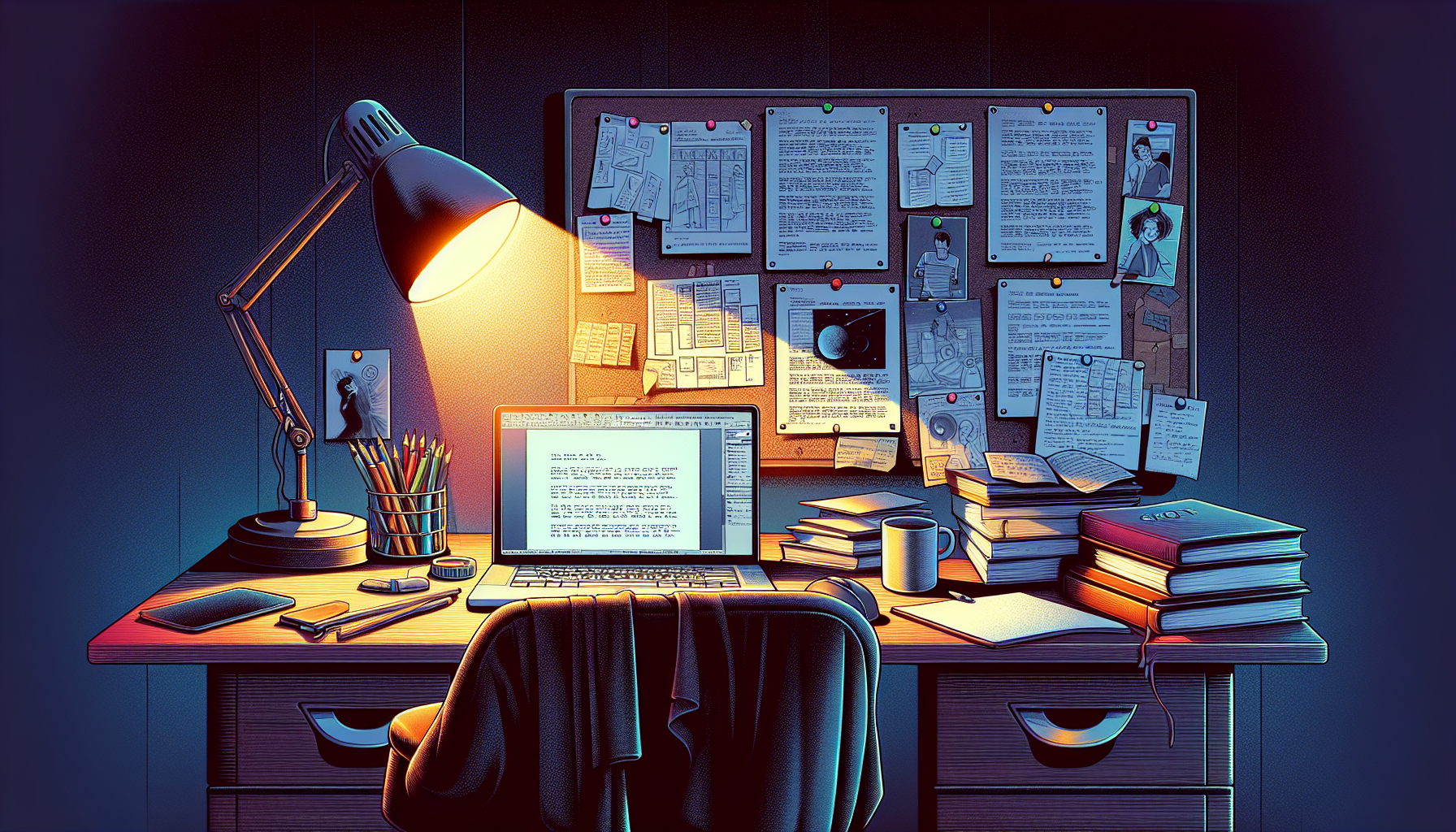
The Anatomy of a Screenplay: Unveiling the Magic
Welcome, aspiring screenwriters and curious minds, to the enchanted world of screenplay writing! Think of a screenplay as the DNA of a movie – the unassuming document where all the celluloid magic begins. But what makes this trove of text so potent? Hold onto your popcorn, because we’re about to dissect the key elements that create blockbuster bloodlines!
Fade In: The Scene Heading (Slugline)
The swanky headline act of every scene, the scene heading, or slugline, isn’t just a title, darling. It’s the club bouncer of your screenplay, opening the velvet rope to a new location or time of day. With a simple INT. or EXT., you declare whether we’re gaping at the marvels inside or braving the wilderness outside. And don’t forget the specifics – INT. BOB’S DINER – NIGHT might just serve up a slice of Americana… or a pie-flinging food fight. Stay tuned!
Action, Action, Action!
Lights, camera, action description! This is where you, as the omnipotent creator, paint a vivid picture of what the audience would see. Be as crispy and crackling as bacon in a pan – concise yet savory. Sally somersaults over the burning banister is far snazzier than Sally jumps over a piece of wood that is on fire. Give us the sizzle – we’re here for the show!
Dialogue: The Verbal Jazz
Now, let’s chat about dialogue. This isn’t just chit-chat; it’s the verbal jazz that gives your characters their groove. Each line should be a polished gem, revealing character, moving the plot, or surfacing subtext. No blah-blah, please – every word counts. Picture your dialogue like a dance-off in the script club; it’s gotta have rhythm! And don’t let your characters monologue unless absolutely necessary – brevity is the soul of wit, remember?
(Parentheticals): The Whispered Asides
(Softly) Here’s a little secret: parentheticals. Think of them as the whispered directions to our actors, giving a nudge on how to deliver their zingers or confessions. Be minimalist, like a Zen master. We don’t need an essay, just a gentle nudge: (sarcastically), (sotto voce), or (with a look that could kill). Use sparingly, for maximum impact.
Transitions: The Glue Between Scenes
If scene headings are your bouncers, transitions are the smooth operators, guiding us from one binge-worthy moment to the next. While “CUT TO:” was once as essential as air, today’s cinematic gurus often forgo overt transitions, opting for seamless visual storytelling. But fear not, young padawan – when a “DISSOLVE TO:” or “FADE OUT.” is necessary, wield it like a master Jedi!
Subtext: The Silent Symphony
Oh, subtext, you elusive enigma, you! A screenplay without subtext is like a burger without the secret sauce. This is the art of the unsaid, the silent symphony playing beneath every line and glance. Your audience should sense the undercurrents of tension, desire, or deceit, even when the dialogue is deceptively calm. Think of it as the screenplay’s invisible ink, legible only to those truly paying attention.
Format: The Standard Suit and Tie
And finally, fashion counts. The format of your screenplay is like a classic tuxedo or a little black dress – timeless, industry-standard, and indispensable. Proper margins, courier font, sluglines, and dialogue centered just so – these aren’t mere formalities, they’re the markers of a professional. You might have the next great story, but if it’s dressed like a hobo, no one’s letting it into the party.
Fade Out
And there you have it – the essential DNA of a screenplay, dissected for your creative pleasure. Now, go forth and script the next big cinematic masterpiece! Remember, the pen is a site of power – wield it wisely and wittily!






